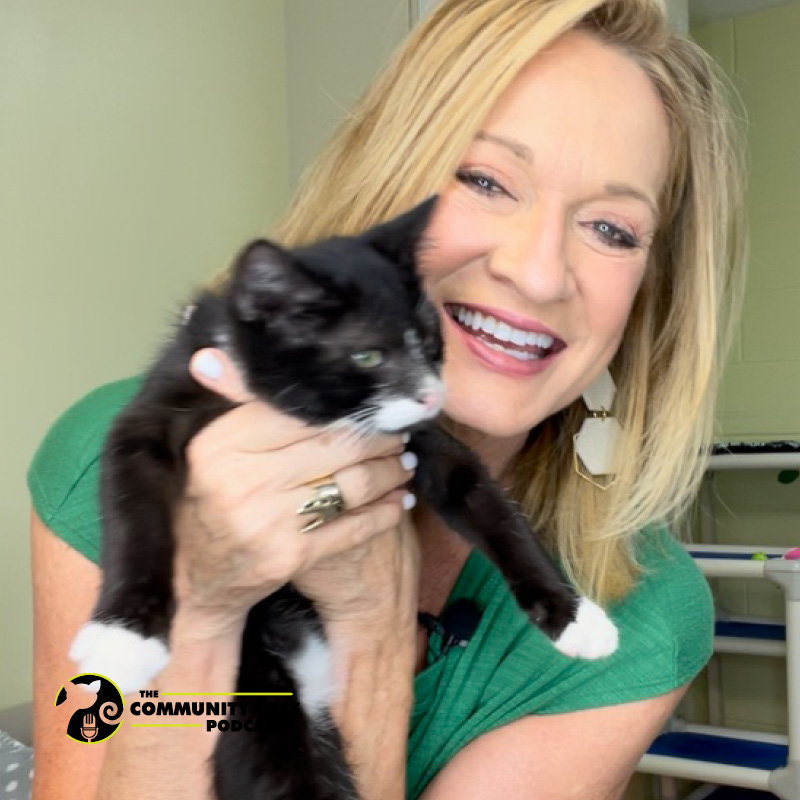
Stress in Pets with Kristen Levine, Nationally Acclaimed Pet Expert and Influencer
June 14, 2022
Handling Costly Surprises with Edwin Plotts, Director of Marketing at Pawlicy Advisor
June 20, 2022
Contributed by Valerie Benka, Director of Programs at Alliance for Contraception in Cats & Dogs (ACC&D)
Computers, specifically computer modeling, can save the lives of free-roaming cats (FRCs).
Despite the increasing popularity of TNR, there are still limited real-world data on what makes a TNR project most successful in terms of population impact and associated costs. Without this information, we can’t identify strategies to maximize impact with limited resources or advocate effectively for humane population management in an evidence-based way.
In response, the Alliance for Contraception in Cats & Dogs (ACC&D) convened a team to fill key gaps in knowledge about how different methods of population control affect FRC numbers. I’m one of those team members, and I want to share what we’ve learned.
We relied on population modeling, which is the best option short of going out and spending years monitoring FRC population numbers while testing different interventions. We combed the literature for real-world data, used expert input where needed, and simulated the effects of different approaches using a realistic computer model. This allowed us to estimate the long-term impacts of 14 management strategies for reducing FRC populations, including TNR, trap and remove, episodic culling, and combination approaches—each performed at high, medium, and low intensities—and no action.
This past winter, we published our third peer-reviewed journal article on these results; it focuses on how to balance population impact and cost in FRC management. There’s also a companion guide with practical takeaways from all the modeling (but without all the technical stuff), and Counting Cats, a resource to help you effectively monitor FRC populations and quantify the success of your work. You can also access these resources and more through ACC&D’s FRC population modeling webpage. All are available for free!
In a nutshell, the models showed that TNR can cost-effectively reduce FRC populations over a 10-year timeframe. It’s also the best way to reduce preventable deaths of kittens. But there’s a catch: we need to perform TNR in specific ways to achieve this result, namely “front-loading” sterilization surgeries, which means doing them intensively early on in your effort.
Here are some best practices that emerged from the modeling:
Identify your target population and set clear goals before you start.
Is your goal to reduce population numbers? To completely eliminate a population in a particular area? To reduce nuisance complaints? The best approach depends in part on your goals.
If the goal is to eliminate a FRC population, removal (lethal or non-lethal) will be more effective than TNR for obvious reasons: cats are taken away. However, the number of cats that would need to be killed is so vast, especially with abandonment and immigration factored in, that it won’t be acceptable in most communities.
Measure baseline numbers and monitor throughout.
It’s important to start any population management project knowing how many cats exist, and where they’re located, and then to track changes as you work to manage the population. You can learn more in our Counting Cats guide.
“Frontload” TNR.
This means reaching 75% of intact cats quickly—even if it requires investing extra resources or focusing on a smaller area at the start. Once done, make sure that the proportion of sterilized cats never drops below 75%, and ideally inches progressively higher. This is so important to achieving good results over time!
Work to curb immigration and abandonment.
New intact cats can really sabotage progress. Our modeling showed that adding even one new cat to the population every six months will more than double the cost to achieve the same population reduction compared to no added cats. Fundamentally, an overabundance of FRCs is as much a “people problem” as it is a “cat problem,” and the needs of the human community deserve consideration and support.
Don’t ignore “preventable” deaths.
I’ll spare you the details (check out this Story Map to learn more), but we found that high-intensity TNR is the best scenario among those we modeled to minimize numbers of preventable deaths. Focusing on deaths that don’t occur requires a shift in thinking, but it’s oh-so-important to the goal of minimizing suffering and maximizing lifesaving.
While models won’t always match “real-world” outcomes, they allow us to learn about the effects of different management strategies in ways that would never otherwise be possible. Combine them with effective cat counting and monitoring, as some leading programs in the U.S. are currently doing (the Hayden Island (OR) Cat Count, the DC Cat Count, and ASPCA programs are a few excellent examples), and we’ll continue to advance this lifesaving work.
Valerie Benka has worked at ACC&D for 9 years. Prior to this, she coordinated a feline adoption program in Virginia while working in the DC nonprofit world. As a student in the Animals and Public Policy Program at Tufts University’s Cummings School of Veterinary Medicine, Valerie conducted research on reduced-cost feline spay/neuter, including the factors that motivate people to have their pets sterilized and both the life histories and long-term outcomes of feline clients.




